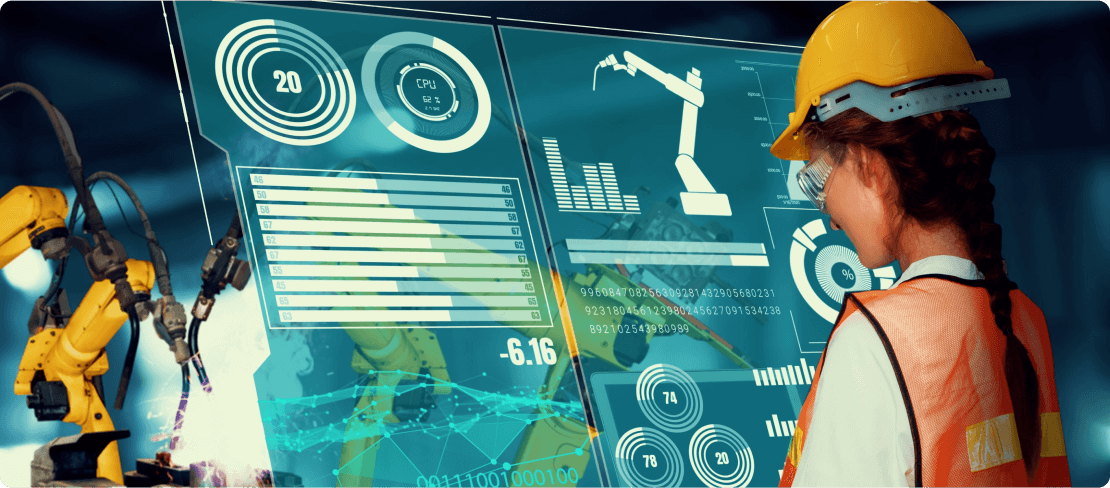
Introduction
Predictive Maintenance in manufacturing implements Artificial Intelligence and Machine Learning algorithms to determine and analyze real-time data generated from different machinery and equipment. It helps businesses identify potential downtime and failures before they occur. Manufacturers can manage their resources intelligently and efficiently. The manufacturing companies, maintenance teams, and AI/ML development services are key players.
Actors
01
Manufacturing Company
It manufactures a wide range of products.
02
Maintenance Team
This is responsible for manufacturing equipment maintenance tasks.
03
AI/ML System
AI/ML development services and algorithms-powered predictive maintenance software systems.
Preconditions
Manufacturing Equipment
The manufacturing company has advanced machinery and equipment enabled by IoT sensors to collect real-time data.
Sensor Data
The sensors installed on machines and manufacturing equipment must function properly, gathering instant data about machine health, like temperature, vibration, and other variables.
Historical Data
Adequate data available on machine performance, its records, and failure instances for training AI/ML models.
Post Conditions
Predictive Maintenance Schedule
The schedule of predictive maintenance in manufacturing software development is generated by AI/ML development services, and the software detects the equipment that requires maintenance in advance based on real-time sensor data and historical patterns.
Maintenance Alerts
It sends timely alerts to the maintenance team through real-time notifications. They get information about the issues, recommended maintenance actions, and estimated failure times.
Minimized Downtime
Predictive maintenance in manufacturing helps to nullify unexpected downtime and machine failures through improved efficiency and enhanced productivity.
Cost Savings
The machine's lifespan increases through predictive maintenance in manufacturing, which leads to cost savings.
Main Flow
Alternative Flow
If the maintenance team detects an emergency flaw or breakdown in the machine, they can take immediate action and prioritize the machinery's health through regular maintenance.

Conclusion
By implementing predictive maintenance in manufacturing through AI and Machine Learning support, you can increase the machine's efficiency and reliability, eliminate downtime issues, and save costs.
Suggested TechStack
Sensors play a significant role in the Industrial Internet of Things (IIoT) to establish a connection between physical systems and data insights. TRooTech provides IoT development to gather real-time data available in different formats, such as thermal images, vibration analysis, acoustic signals, and equipment observations. Also, low-level communication protocols like Serial Peripheral Interface (SPI), Inter-Integrated Circuit (I2C), and RS-232 seamlessly integrate with the IIoT network or gateway. Companies manufacture these protocols using physical circuits such as Universal Asynchronous Receivers or Transmitters (UART) and General-Purpose Interface Bus (GPIB).

The critical function of an IIoT gateway or network is to provide vertical service between the backend cloud server and IoT sensors. If it is a large and complicated industrial setup, one may require an intelligent IoT gateway (field gateway) for edge computing.

Companies providing Cloud engineering services like Microsoft Azure, Amazon, Thinkspace, etc., have enhanced their CMMS platform hosting services, offering many benefits. These include serverless computing, providing a large centralized data warehouse, real-time analytics reporting, etc.

You can display customized reports showing the current health condition of the assets and monitoring conditions as an interface or control unit through web or mobile API.

Build advanced applications with our Flutter app development services and streamline your business processes
Team up with our expert developers to build feature-rich applications

